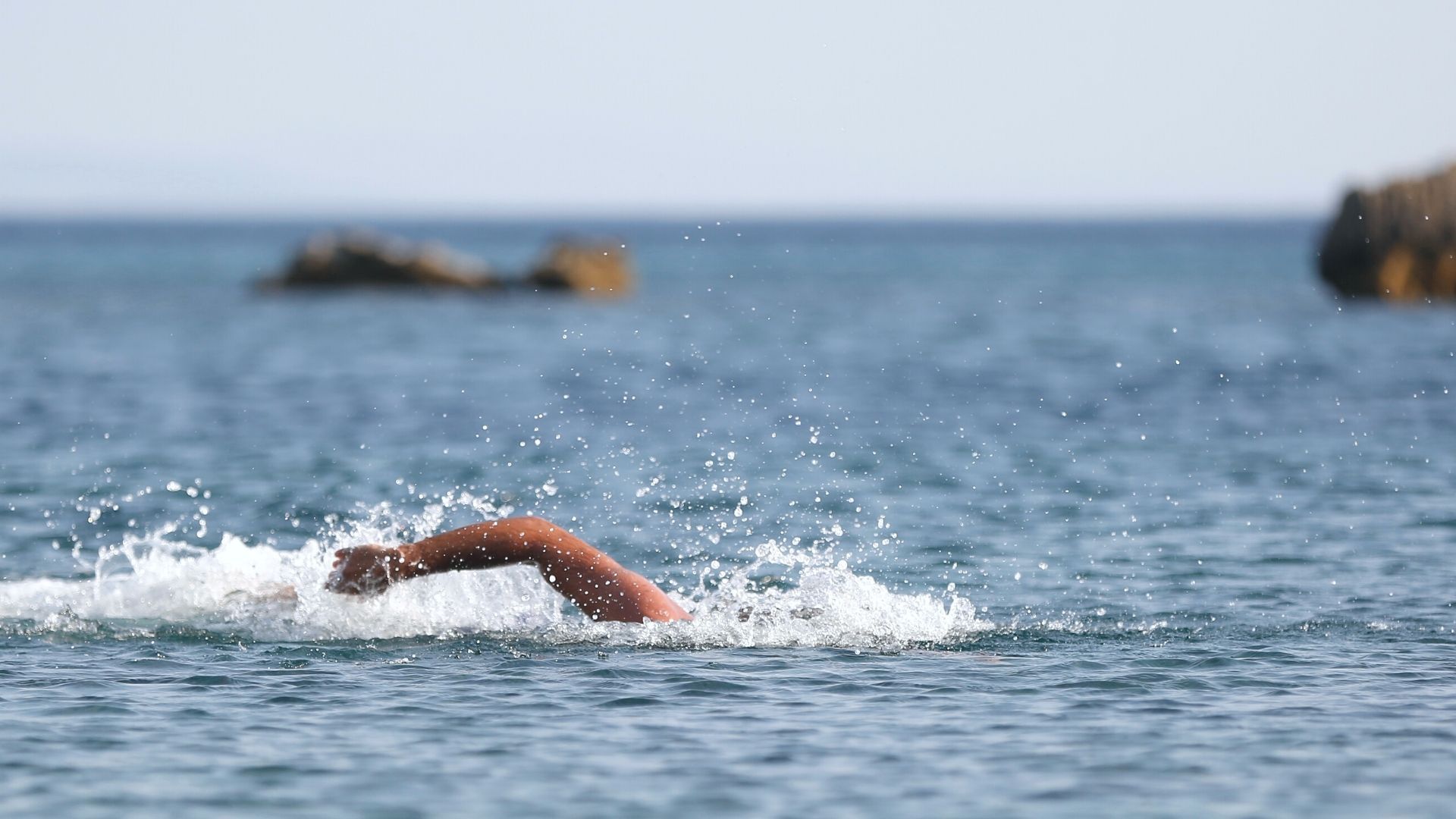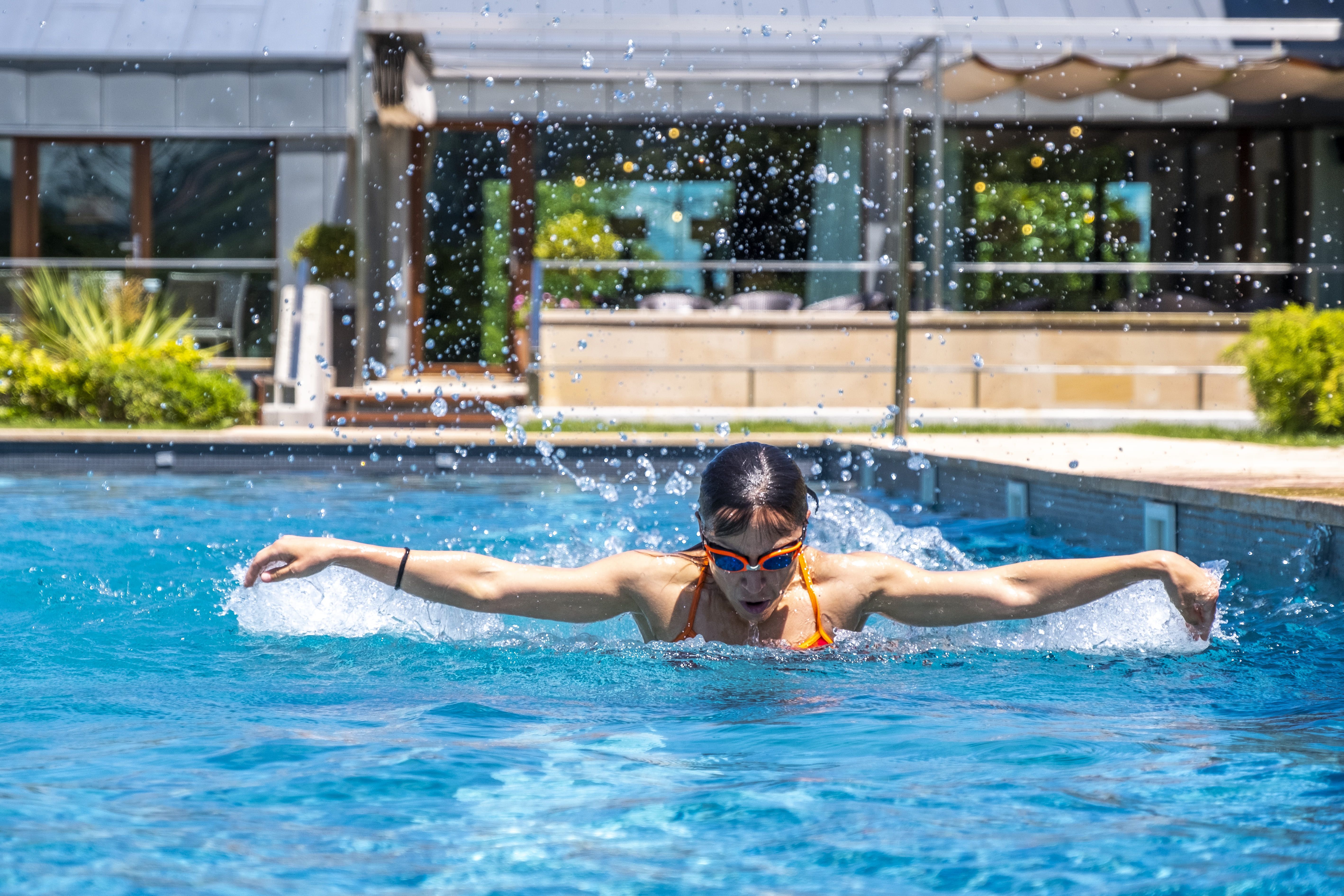To train for swimming in a pool or open water?
This is a very recurrent question among triathletes who have the opportunity to be close to the sea. In winter, there are few of those who do open water swimming training, most of us prefer the pool, where we do not have to put on a wetsuit or fight against inclement weather and cold waters.
On the other hand, more and more people prefer the sea for training because of the good weather. Being able to train without neoprene, on the beach, swimming long, without turns and being able to see the seabed without the heat of the swimming pool makes the idea of going to the sea more attractive.
In the following article, we will present which are the pros and cons of each workout in our opinion.
Open-water swimming
A swimming workout in the sea is the closest you can get to a real racing situation. Triathlons and aquathlons are almost always held in open water. Preparing for a triathlon involves a great deal of training and the sea is the perfect place to do it.
Training in the sea helps us to get our stroke used to the different types of waves. If we have a short, choppy wave, we will have to slide less and increase the stroke frequency. On the other hand, if the wave is long and high, we will have to adapt our stroke to surf it when we are on the crest and paddle hard to ride it up.
It is also important to get used to breathing on the crest of the wave. In this way, you avoid swallowing water.

Training in open water also helps us to learn to orient ourselves and trace the shortest path to our arrival or turning point. It is important to get used to looking ahead and take advantage of the turn to breathe. In this way, we do not lose speed and we know how to rectify our trajectory depending on the currents or the waves.
In the sea, we can also train without turning, which helps us to maintain a more constant rhythm. This is not possible in a pool.
Nowadays with the help of GPS, we can have very reliable data on speed, distance and stroke technique and efficiency. Data that until a few years ago we could only have in the pool.
Pool swimming
In the pool, we have a more stable environment. We are not affected by currents, waves, tides, wind ... So the rhythms, times, swimming techniques are always comparable, from one session to another. This is very positive if we want to compare and see how we are progressing.
It is also easier to record ourselves and be able to see our technique and observe possible mistakes.
In short, we can be more precise and analytical in the pool than in the sea.

Pool or sea?
Both the pool and the sea have positive and negative aspects. Training just in one of the two mediums will allow us to improve our techniques if we do it very well. If we want to get the most of our swimming workouts it is highly recommended to combine both of them. We should dedicate some swimming workout sessions to the sea and some to the pool.
For instance, if we train 3 days a week we can choose to swim 1 day in the pool and 2 days in the sea or the other way round. If we train in the sea, we can take advantage to do long and medium distance series between 3000 and 300 metres. We will use shorter distances to train the different types of stroke and to adapt to the environment.
In the pool we can work shorter series (between 25m and 400m), giving great importance to speed and technique and strength exercises (with pull, paddles, board, fins ...).
Remember, it is important to complement your swimming workouts with a correct diet and rest.
Have a good workout!
by Paco Arnau, Javier Lorente
ARTIEM Sports